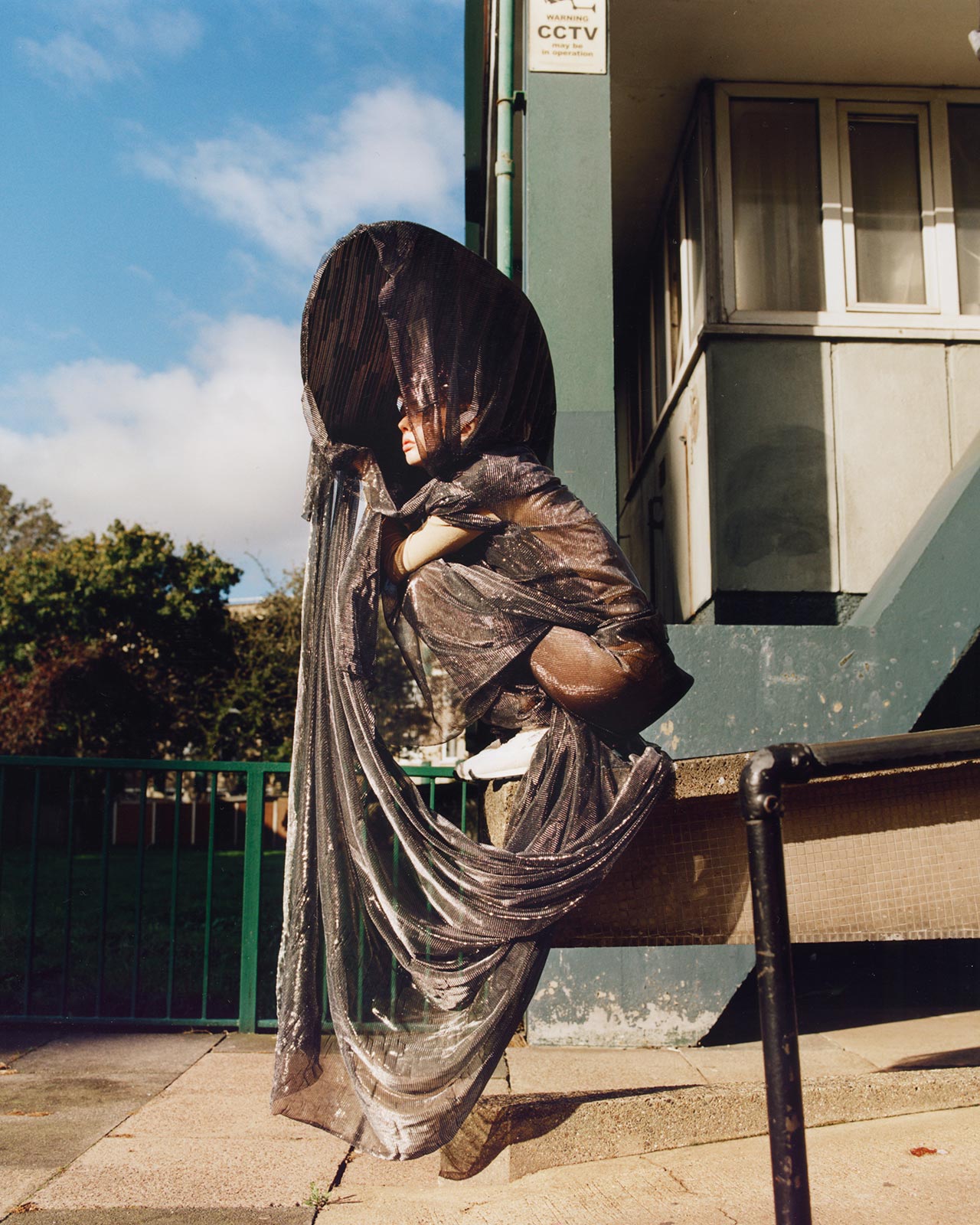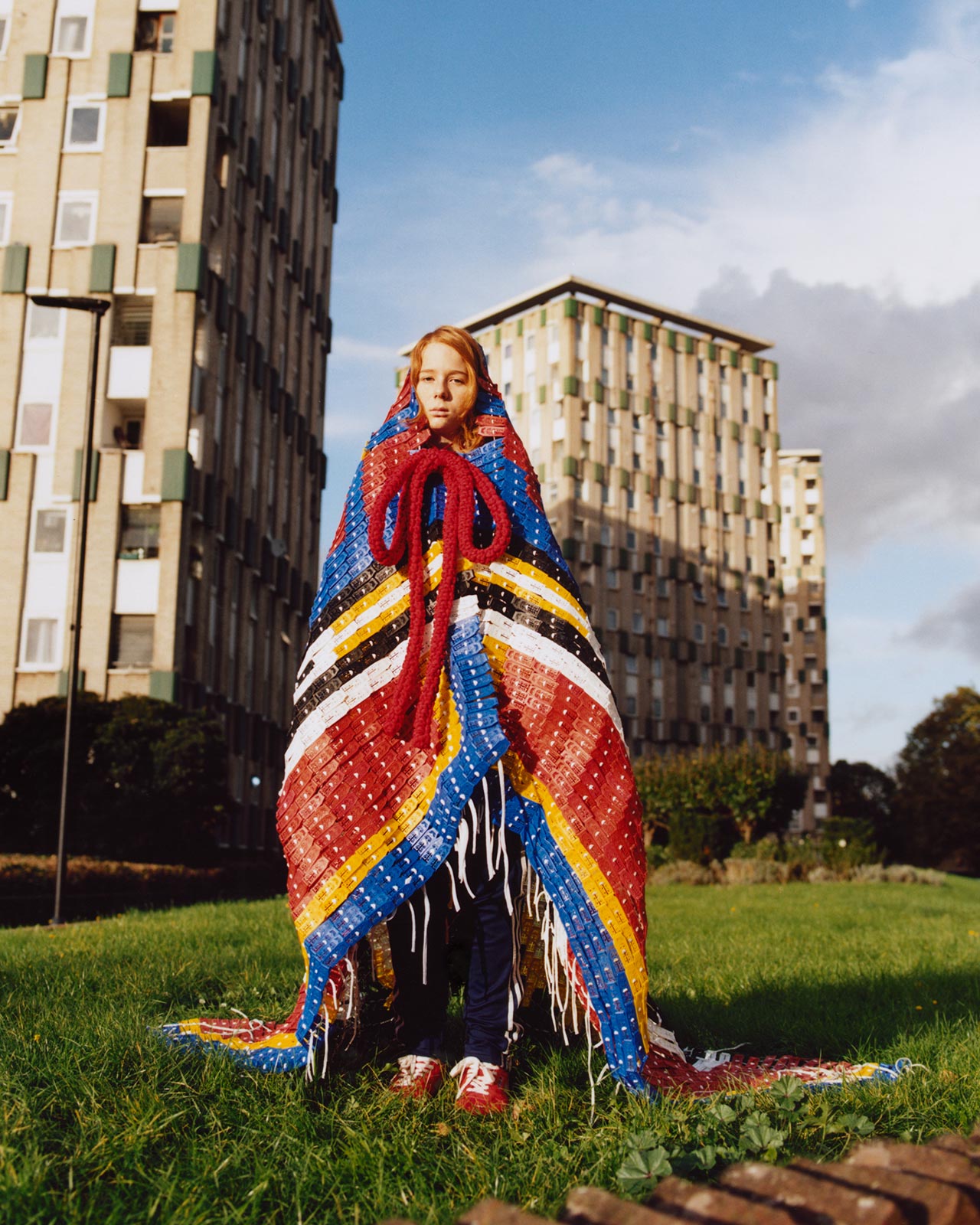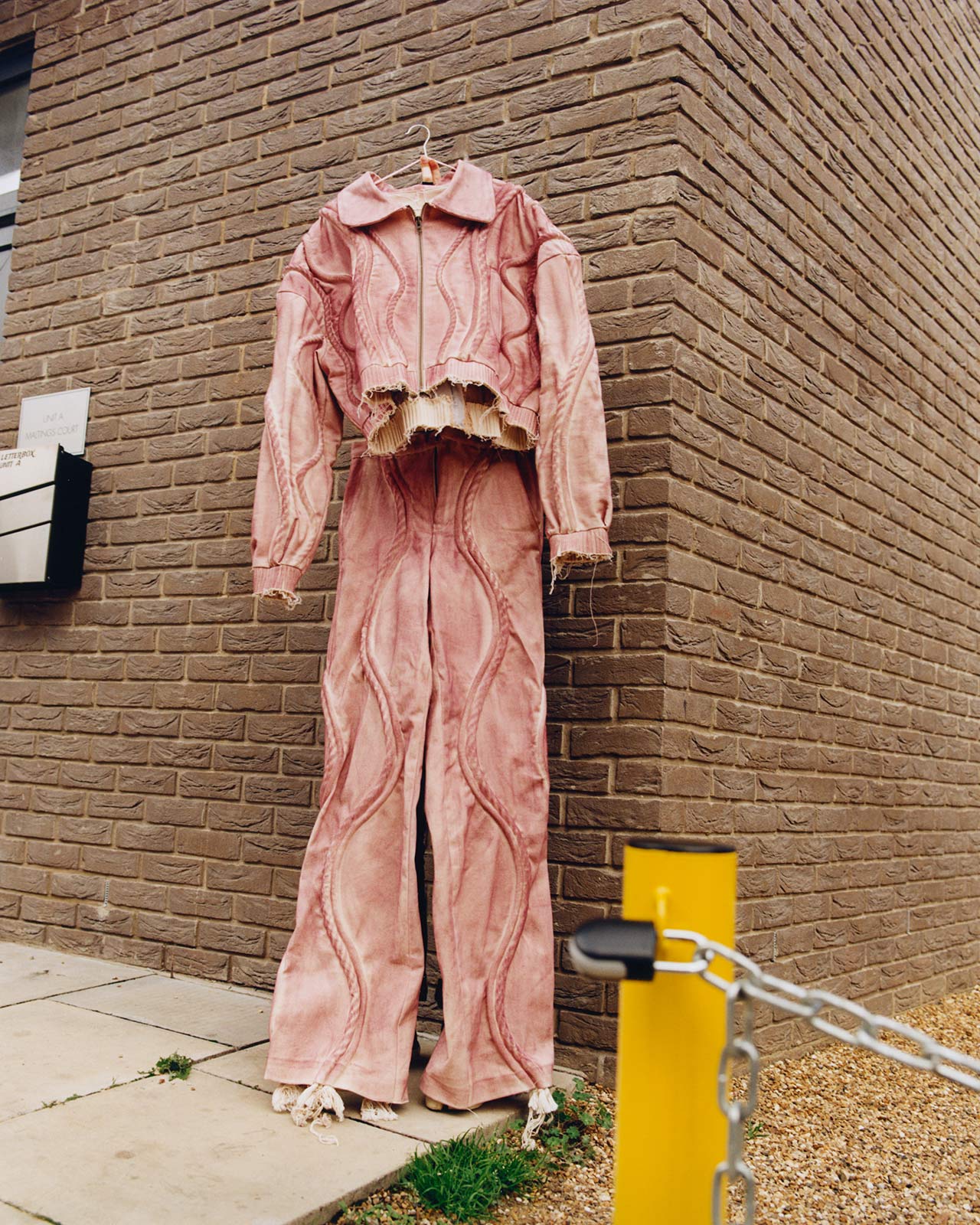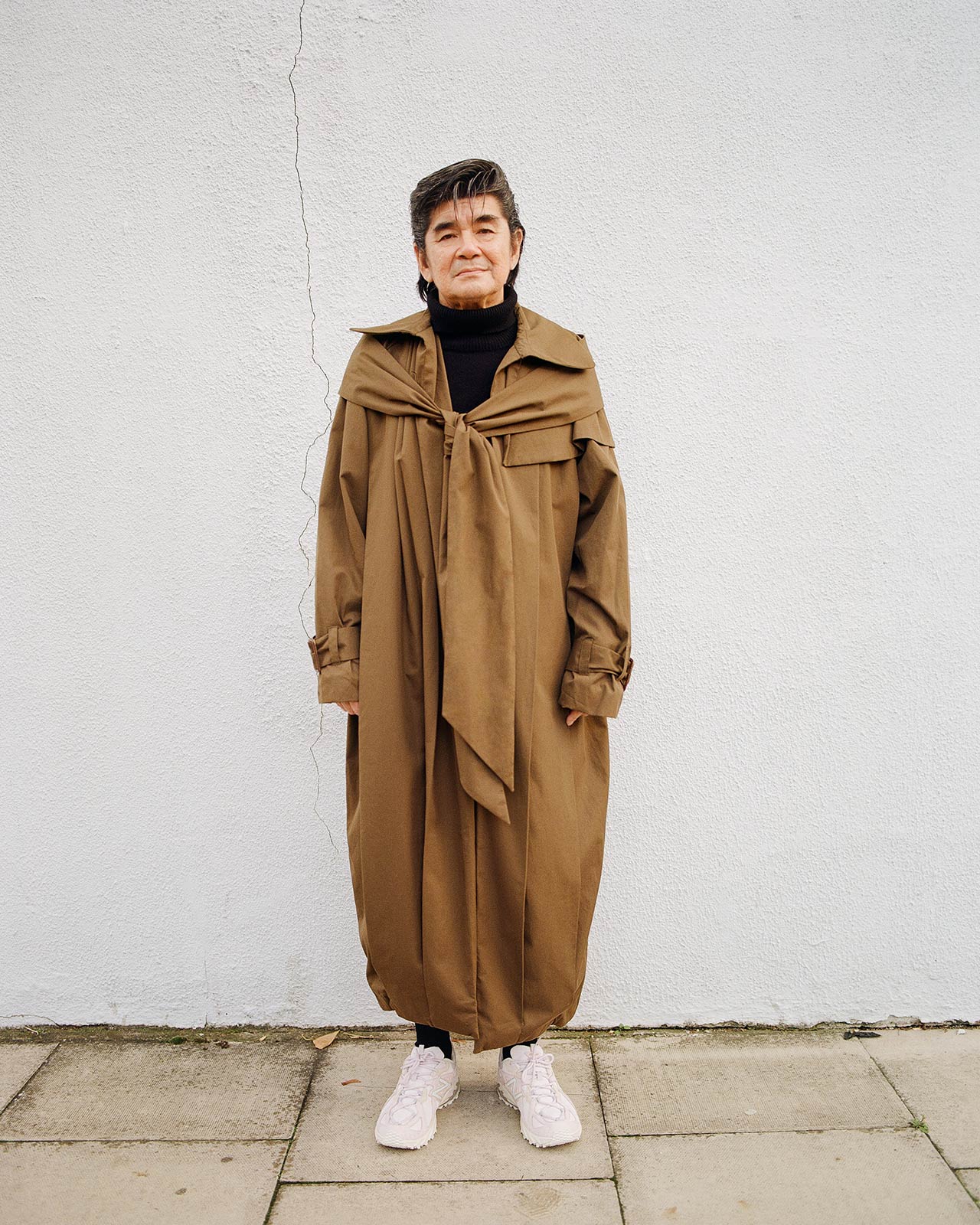Documents asks 12 recent fashion graduates about borrowed inspirations, sustainable aspirations, and their city’s many haunts
Hundreds of trains depart King’s Cross station every day, with services bound for Birmmingham, Cardiff, Inverness, Amsterdam, and Paris. Over 50,000 passengers travel through the station on a daily basis, making the central London terminal an immeasurable incubator for human interaction, however brief or serendipitous.
Central Saint Martins, located next door to King’s Cross across the Regent’s Canal, is another human activity hub—of the creative, sartorial sort. The university, which offers courses across the fine arts, includes the UK’s preeminent fashion school, which graduates roughly a hundred students every year. Like its neighbor opposite the canal, the school is home to people from around the world, all of whom possess distinct visions for their practice.
Recently, Document caught up with a few members of CSM’s graduating class, discussing topics that range from Golden Age Spanish literature to the twilit memories of childhood. Having spent the last few years developing their voice within the university, they look forward to embarking on the city, and the fashion world at large, with all its promise and uncertainty.
Hayley Thew
Document Journal: What’s behind your collection conceptually?
Hayley Thew: I like to begin a project with a physical object in mind. My final collection for the course was inspired by objects from my childhood dollhouse. The collection navigated how we experience memories from pre-adolescence.
Document: What’s the most important lesson you took away from your education in design?
Hayley: Learning how to turn experiences and interests into space for creative ideas.
Document: Is there a technique or material you haven’t worked with yet that might mesh well in the future?
Hayley: This collection bordered the surreal. I think if I were to do another I’d love to focus on beautiful clothing that I could feel amazing wearing.
Ha Hye-Jin
Document: Who’s your greatest influence, and how does their work show up in your practice?
Ha Hye-Jin: Steve McPherson is one of my greatest influences. He has worked with marine litter and plastic on the coast of Kent. He asks compelling questions about the mass amount of plastic that is floating around in our ocean.
Document: What’s behind your collection conceptually?
Hye-Jin: I am particularly interested in the life cycle of production, from how clothing is made to what happens to it once it is discarded. I believe that used objects contain the memory of users. By documenting time and place, I have been able to analyze how geographical factors affect the materials found in that environment. I love to imagine their experiences, origin stories, how they got there, and who owned them in a past life.
Jessica Pan
Document: What’s the most important lesson you took away from your education in design?
Jessica Pan: I believe the hardest but also most fulfilling lesson was to trust my vision despite outside influences. CSM is filled with so many different individuals, and everyone has such unique styles. The school’s supportive environment allowed me to hone my own fashion identity.
Document: Is there a technique or material you haven’t worked with yet that might mesh well in the future?
Jessica: I would like to experiment more with metal.
Tazmin Porter
Document: How do you set the stage for creativity to flourish?
Tazmin Porter: It starts with a full stomach and fresh inspiration. Whether I’m sat on the bus or doing a food shop, I am constantly examining the world, seeing how I could link it to a project.
Document: What’s behind your collection conceptually?
Tazmin: I reminisce on childhood, living above my grandparent’s dress shop, or working on construction sites with my dad on weekends. I also took inspiration from advertisements, tongue twisters, and the trinkets my grandparents sell in their shop.
Document: What’s the most exciting thing about the design scene in London?
Tazmin: The people—not just people in design, but the whole of London.
Lara Hughes
Document: What’s behind your collection conceptually?
Lara Hughes: Last December, I visited a stock car race with my father, at a raceway we used to go to when I was younger. I was struck by the fluorescent cars racing around the track, which was covered in a heavy fog. As the cars rammed into each other, they reminded me of the popular “wrecking dance” at the psychobilly gigs I attend. I wanted to capture this moment of collision, wreckage, and explosive energy within the collection.
Document: How do you set the stage for creativity to flourish?
Lara: I love to go to as many different and varied events as often as possible, no matter how particular or peculiar. I went to the circus last week because I thought it would be fun and inspiring. That’s what’s important to my practice, the balance of work and play; the rest snowballs from there.
Ivan Delogu
Document: When you’re feeling stuck, where in London do you seek out inspiration?
Ivan Delogu: London offers countless sources of inspiration. I have my favorite places, such as Regent’s Canal, the CSM library, and my friends’ allotment in Barnet. I process inspirations in safe spaces, such as my home, my studio, and my community of creative friends.
Document: What’s behind your collection conceptually, and how did that inform its material design?
Ivan: My collection explores the historical and present-day experiences of Sardinian women, taking inspiration from the performance art movement of the 1970s. Upon studying the work of Birgit Jürgenssen, I was inspired to incorporate mosquito curtains into my artistic endeavors. These curtains are commonly found in southern Italy, especially in the summer, and adorn the entrances to bakeries, grocery stores, fish markets, and bars. I have always been drawn to their unique design, which reflects the contemporary aesthetics of the Mediterranean region. By utilizing these curtains to create my textiles, I was able to create something visually powerful that evokes nostalgic memories of my upbringing.
Maria Rupprecht
Document: What’s behind your collection conceptually, and how did that inform its material design?
Maria Rupprecht: A key area of inspiration for this collection is Austria. I have always found traditional Austrian dress very beautiful. Embellishment techniques featured in both men’s and women’s garments inspired me to take a more modern approach, transforming decorative features into more structural elements within the garments. I used cord and rope to create textiles that deform the garments when worn, which was an exciting new way for me to experiment with silhouette. This became a strong characteristic of my work.
Document: What’s the biggest challenge you face as a designer?
Maria: Coming straight out of uni, my biggest concern was the pressure of finding a job that supports me financially and is creatively stimulating. Not having the luxury of living at home—my family lives in a different country—set some financial challenges that can be obstacles for creativity. But I also believe that a lot of young creatives are carving out space within the industry that suits their skills and creative interests.
Izzy McKinlay
Document: Tell me about the piece from your collection that best sums up your practice.
Izzy McKinlay: Sustainability for me extends beyond materials—it’s about reshaping garments in a way to render their function fun and interactive. The bag-skirt hybrid, for instance, is a deliberate play with absurd functionality. Crafted from cactus “leather,” the handbag becomes a dynamic part of the skirt. Unzipped, it functions independently, leaving a window to the skin. It’s a bit tongue-in-cheek, a bit whimsical.
Document: What do you see in your creative future?
Izzy: I love the process of collaboration. Learning skills in sculpting and 3D rendering really became fundamental to opening my designs to more experimentation.
Chelsea Kaya
Document: Tell me about the piece from your collection that best sums up your practice.
Chelsea Kaya: I call it the Minute Dress. The idea came from altering a conventional skirt into a dress by pulling out its lining and deconstructing the garment and to truly understand its possibility.
Document: What do you see in your creative future?
Chelsea: I still have much to learn, but I hope to eventually have a practice that includes designing accessories, decorations, and furniture in addition to garments.
Eden Tan
Document: What sets London’s design scene apart?
Eden Tan: It’s a gift that keeps on giving.
Document: What’s behind your collection conceptually, and how did that inform its material design?
Eden: The central idea of this collection was to have control over the legacy of the garments. On Borrowed Fabric envisions the pieces as future waste from the outset. The construction of each garment required as little intervention as possible, keeping the material close to its raw form. The clothes are designed to eliminate any obstacles that would prevent someone from being able to re-tailor my collection, and make something of their own.
Giju Kim
Document: What’s behind your collection conceptually, and how did that inform its material design?
Giju Kim: My collection is inspired by Don Quixote, by Miguel de Cervantes. Like the novel’s protagonist, I focused on the pursuit of dreams whilst overcoming life’s inherent obstacles. I initially approached Quixote’s failures, scars, and delusion by deconstructing and exaggerating typical menswear, especially in suits and denim jackets.
Document: When you’re feeling stuck, where in London do you seek out inspiration?
Giju: The walk from the start of Tower Bridge to London Bridge. The view of the city of London is incredible and makes me feel alive.
Joel Lines
Document: What’s the biggest challenge you face as a designer? And what’s your greatest advantage?
Joel Lines: Having recently left the art school bubble, it is daunting to consider what direction to take as a young designer, particularly as I want to explore the interface between performance and wearable art. I know that I want to use my abilities to enhance the lives of others, whilst finding a way to make a living, and at the moment, that does feel like a challenge.
My greatest advantage is knowing that I have a lot of support from my family and community. Going through a practical degree course during a pandemic, as well as other personal challenges, has given me resilience.
Document: What type of person do you design for?
Joel: The person I design for is a performer—or someone with a need to tell a story. As a multidisciplinary visual artist, I work with a range of media to create a blend of conceptual fashion and performance costumes. Theater, costume, and music are a huge part of my creative practice.
Models Mae, Sannica, Toto, Dillon, Patrick, Resham. Hair Yumi Nakada Dingle.















































